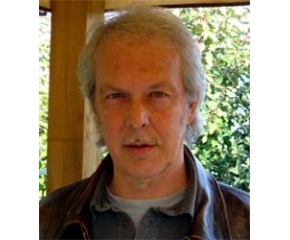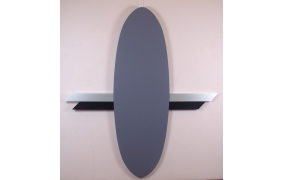
Piacentino Gianni
Since most of them exploit geometric forms of maximum simplicity - an immense right triangle, a Greek cross, a standing " L ", a single upright pole mounted perpendicularly to an almost invisible base of plexiglass, a hanging theree sided figure of the shape and nearly of the proportions of a doorway - Gianni Piacentino's sculptures would at first appear to have something to do with "primary structures". The similarity, however, is more apparent than real by virtue of the manner in which these sculptures exploit the element of color. The forms lie along the edge of the nonexistant for...
Since most of them exploit geometric forms of maximum simplicity - an immense right triangle, a Greek cross, a standing " L ", a single upright pole mounted perpendicularly to an almost invisible base of plexiglass, a hanging theree sided figure of the shape and nearly of the proportions of a doorway - Gianni Piacentino's sculptures would at first appear to have something to do with "primary structures". The similarity, however, is more apparent than real by virtue of the manner in which these sculptures exploit the element of color. The forms lie along the edge of the nonexistant for reasons other than the delirium of the dialectic distinctions between somethingness and nothingness. Entropy, after all, is a concept more dramatic than visual, and although Piacentino's work has implications that go far beyond the problems of the physical act of seeing, the use of means that are wholly visual is necessitated by the nature of what these objects finally come to mean. The work stays rigidly within the limits of a study in " pure perception ", and rigorously avoids a situation in which object presents itself as essence. It is not anti-metaphysical, it is simply non-metaphysical. The geometric structures of these sculptures are the beginning rather than the end of the story - they are the materials upon which the most essential part of the operation comes to be performed. It is no accident that Piacentino used to paint large monochrome canvasses and that the pole like structures with which he currently works sometimes make room for the production of large plat boxes that, above all, present themselves as surfaces. Though explicitely sculptural, the constructions made of two by twos and two by fours are in some ways analogous to shaped canvasses, and the simplicity of these structural elements serves primarily to establish a situation of absolute formal neutrality so as to activate the possibility of a zero level dialog between shape, color and material as monads fundamental to the complex phenomenon of perception. Piacentino uses form to nullify subject matter, and then uses color to nullify form, thus creating structures that have been determined by the primary consideration of neither the one nor the other. Henri Martin
More

Follow us